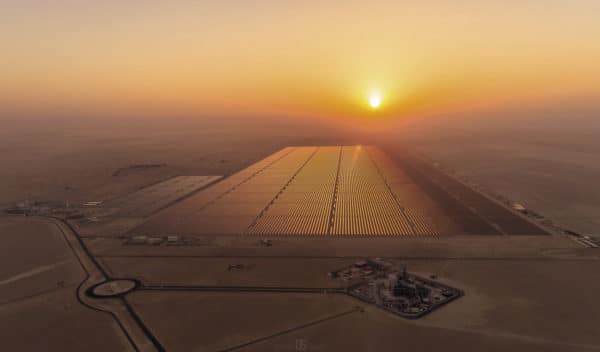From pv magazine 12/2020
Really smart homes
Fully integrated solar home systems have made several entries in power electronics companies’ product brochures this year. It has long been anticipated and talked about – a solar roof, a battery, EV charger, high-load appliances with smart interfaces, and a hybrid inverter in the middle, optimizing everything according to what the owner set in the system.
That can be either to maximize self-consumption, make use of time-of-use tariffs, or tap grid ancillary service streams when an aggregator is involved. The technology itself is not entirely new. There have been Internet of Things plugs for appliances and smart EV chargers in the past. Still, it seems that it was only this year that manufacturers bundled the different elements into a comprehensive and fully integrated solution. With DC connected resistance water heaters and smart electric vehicle chargers, gas and fuel costs can be avoided.
The groundwork was laid in 2019, when numerous manufacturers brought their hybrid inverters to market. The trend caught on, and many companies moved it up a notch this year in terms of technology integration. Manufacturers are claiming that 95% of autarky are now possible at competitive costs. In the past, such high autarky rates would be achieved by bigger batteries. Today, however, some of the achievement comes from smart load management. Some manufacturers even claim that their systems can process weather forecasts and act accordingly, to minimize grid consumption or charge up EV and storage systems ahead of a storm, in preparation for a prolonged blackout.
An appealing proposition is going off-grid almost entirely – a tech aspiration of many PV owners, even though they’ve deemed it too expensive in the past. Especially in Australia and the United States, power outages have already stimulated demand for offgrid-capable inverters. Though this alone would be appealing enough for many, this product trend is remarkable for yet another reason. It marks a giant leap in the paradigm shift, from residential PV systems being mandated by government supported schemes such as feed-in tariffs, to a market-based approach in which such systems can stand on their own feet.
By Marian Willuhn
The race for H
At the dawn of this new decade, green hydrogen represents an adventure similarly driven by geopolitical and geo-economic forces. Hydrogen’s applications are seemingly as plentiful as it is, but nations around the world are particularly besotted with its potential as a clean fuel for shipping, trucking, aviation and backup power plants, as well as the production of ammonia, methanol, and steel. Although, as Siemens Energy CEO Christian Bruch noted in a recent interview, green hydrogen is still too expensive.
Making it cheaply

Image: Gadir Shaar
Getting the price of hydrogen down is at the heart of national hydrogen strategies the world over. This has been the case since discussion of green hydrogen began in the early 1970s. But the exponential fall in the cost of solar and wind means that the most abundant element in the universe is becoming abundantly usable.
China wants to reprise the leading role it played in reducing the cost of solar to the hydrogen economy. Japan, Korea, Singapore, Germany and others have made it known that they’re betting on a green hydrogen future. Indeed, Germany is putting the largest share of its green energy stimulus funds toward the fuel. In turn, Australia, Norway, Brunei, the UAE, Saudi Arabia, Morocco and others have made it known that they’re betting on supplying that green hydrogen by taking advantage of abundant solar resources.
Popular content
In Australia, major projects are already in advanced stages of planning. The 26 GW Asian Renewable Energy Hub and the 5 GW Murchison Renewable Hydrogen Project are just two examples of massive-scale solar and wind farms being designed to produce hydrogen for export. Another large-scale project, the Arrowsmith Hydrogen Project, expects to be producing green hydrogen by the final quarter of 2022.
However, Australia faces stiff competition from the likes of the UAE, which knows that utilizing only 20% of its land for solar panels could produce enough hydrogen for export to match its current oil and gas revenue. Similarly, other MENA nations are also chasing green oil, particularly Saudi Arabia and Morocco. Saudi Arabia is keen to export green hydrogen, as it has with oil. But it is also currently building a futuristic city called Neom which will be powered by the clean fuel. A U.S. gas company, Air Products & Chemicals, is already constructing a 4 GW green hydrogen power plant for Neom, with solar and wind sprawling out across the desert from the Red Sea.
Many have put the green hydrogen economy timeline at 2050, but IHS Markit is already predicting price parity with gray hydrogen by 2030. Considering the rate at which renewable energy costs are falling, and the geopolitical pressures evidently at play, what we can be sure of is that the race is certainly afoot.
By Blake Matich
Read PV trends of 2020: Part 1
Read PV trends of 2020: Part 2
Read PV trends of 2020: Part 3
Read PV trends of 2020: Part 4
This content is protected by copyright and may not be reused. If you want to cooperate with us and would like to reuse some of our content, please contact: editors@pv-magazine.com.


1 comment
By submitting this form you agree to pv magazine using your data for the purposes of publishing your comment.
Your personal data will only be disclosed or otherwise transmitted to third parties for the purposes of spam filtering or if this is necessary for technical maintenance of the website. Any other transfer to third parties will not take place unless this is justified on the basis of applicable data protection regulations or if pv magazine is legally obliged to do so.
You may revoke this consent at any time with effect for the future, in which case your personal data will be deleted immediately. Otherwise, your data will be deleted if pv magazine has processed your request or the purpose of data storage is fulfilled.
Further information on data privacy can be found in our Data Protection Policy.